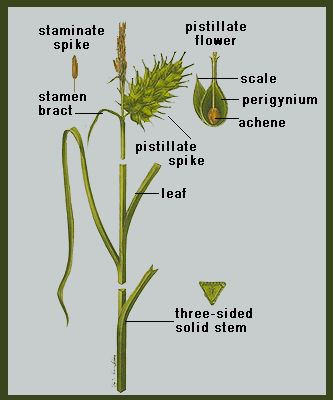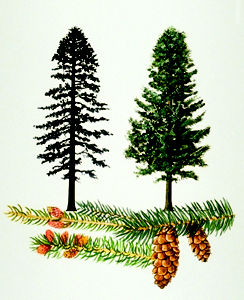Article
Pulse Crops
Pulse crops are members of the family Leguminosae or Fabaceae (see LEGUME). The term "pulse crops" generally refers to those plant species harvested primarily for dry seed that is used as both human food and animal feed.

Enter your search term
Signing up enhances your TCE experience with the ability to save items to your personal reading list, and access the interactive map.
Create AccountArticle
Pulse crops are members of the family Leguminosae or Fabaceae (see LEGUME). The term "pulse crops" generally refers to those plant species harvested primarily for dry seed that is used as both human food and animal feed.
"https://d3d0lqu00lnqvz.cloudfront.net/media/media/8e804f6a-faf5-40ac-966e-493d9162961b.jpg" // resources/views/front/categories/view.blade.phphttps://d3d0lqu00lnqvz.cloudfront.net/media/media/8e804f6a-faf5-40ac-966e-493d9162961b.jpg

Article
Ragweed is an annual or perennial plant of the genus Ambrosia, family Compositae or Asteraceae. Fifteen species are native to North America; 3 occur across Canada: common ragweed (A. artemisiifolia), perennial ragweed (A. coronopifolia) and giant ragweed (A. trifida).
"https://www.thecanadianencyclopedia.ca/images/tce_placeholder.jpg?v=e9dca980c9bdb3aa11e832e7ea94f5d9" // resources/views/front/categories/view.blade.phphttps://www.thecanadianencyclopedia.ca/images/tce_placeholder.jpg?v=e9dca980c9bdb3aa11e832e7ea94f5d9

Article
Many people believe a new sapling must be planted to replace every tree that is harvested. In fact, the FOREST regenerates naturally. After logging, young shoots grow and develop quickly because they have more room and good exposure to sunlight.
"https://www.thecanadianencyclopedia.ca/images/tce_placeholder.jpg?v=e9dca980c9bdb3aa11e832e7ea94f5d9" // resources/views/front/categories/view.blade.phphttps://www.thecanadianencyclopedia.ca/images/tce_placeholder.jpg?v=e9dca980c9bdb3aa11e832e7ea94f5d9

Article
Rhododendron [Gk, "red tree"] is a large genus (700 species) of the heath family (Ericaceae) found in the Northern Hemisphere; 4 species are native to Canada. The genus contains both rhododendrons, usually evergreen, and azaleas, which are deciduous.
"https://www.thecanadianencyclopedia.ca/images/tce_placeholder.jpg?v=e9dca980c9bdb3aa11e832e7ea94f5d9" // resources/views/front/categories/view.blade.phphttps://www.thecanadianencyclopedia.ca/images/tce_placeholder.jpg?v=e9dca980c9bdb3aa11e832e7ea94f5d9

Article
Rose is a common name for members of genus Rosa of the rose family (Rosaceae). This large family, comprising more than 100 genera and 2000-3000 species, includes plants as diverse as strawberries, almonds and pears.
"https://www.thecanadianencyclopedia.ca/images/tce_placeholder.jpg?v=e9dca980c9bdb3aa11e832e7ea94f5d9" // resources/views/front/categories/view.blade.phphttps://www.thecanadianencyclopedia.ca/images/tce_placeholder.jpg?v=e9dca980c9bdb3aa11e832e7ea94f5d9

Article
The greatest variety of native sagebrushes occurs in the western mountains, where species that range from Alaska to California and Colorado are found. Several species range across the prairies and 2 species are transcontinental in Canada. Sagebrushes grow on dry plains, hills and rocky slopes.
"https://www.thecanadianencyclopedia.ca/images/tce_placeholder.jpg?v=e9dca980c9bdb3aa11e832e7ea94f5d9" // resources/views/front/categories/view.blade.phphttps://www.thecanadianencyclopedia.ca/images/tce_placeholder.jpg?v=e9dca980c9bdb3aa11e832e7ea94f5d9

Article
Flowers, mostly small, commonly white or yellow, are borne as terminal clusters on hairy stalks. Plants form tufted, spreading cushions, frequently giving striking patches of colour. S.
"https://www.thecanadianencyclopedia.ca/images/tce_placeholder.jpg?v=e9dca980c9bdb3aa11e832e7ea94f5d9" // resources/views/front/categories/view.blade.phphttps://www.thecanadianencyclopedia.ca/images/tce_placeholder.jpg?v=e9dca980c9bdb3aa11e832e7ea94f5d9

Article
Seaweeds are multicellular marine algae, visible to the naked eye. They extend from the uppermost reaches of sea spray on the shore to the lower limits of light beneath the surface of the water.
"https://d3d0lqu00lnqvz.cloudfront.net/media/media/7fef297e-e301-4ad4-8cc1-d64bd2f9e902.jpg" // resources/views/front/categories/view.blade.phphttps://d3d0lqu00lnqvz.cloudfront.net/media/media/7fef297e-e301-4ad4-8cc1-d64bd2f9e902.jpg

Article
Sedge is a grasslike plant common throughout temperate and cold regions. The genus name, Carex (family Cyperaceae), is probably derived from keiro, referring to the sharp leaf margins.
"https://d3d0lqu00lnqvz.cloudfront.net/media/media/e54d9ac1-e557-4493-aa21-0155fa62dd38.jpg" // resources/views/front/categories/view.blade.phphttps://d3d0lqu00lnqvz.cloudfront.net/media/media/e54d9ac1-e557-4493-aa21-0155fa62dd38.jpg

Article
The common feature uniting seed plants is the "seed habit," a unique method of sexual reproduction. In all vascular plants, the conspicuous plant is a spore producer (sporophyte) that alternates, in the life cycle, with a sexual phase (gametophyte).
"https://d3d0lqu00lnqvz.cloudfront.net/media/media/bdc4d290-63b3-44ee-a1c0-cdd4bd1288a8.jpg" // resources/views/front/categories/view.blade.phphttps://d3d0lqu00lnqvz.cloudfront.net/media/media/bdc4d290-63b3-44ee-a1c0-cdd4bd1288a8.jpg

Article
Silviculture is the branch of FORESTRY that deals with establishing, caring for and reproducing stands of trees for a variety of forest uses including wildlife habitat, timber production and outdoor recreation.
"https://www.thecanadianencyclopedia.ca/images/tce_placeholder.jpg?v=e9dca980c9bdb3aa11e832e7ea94f5d9" // resources/views/front/categories/view.blade.phphttps://www.thecanadianencyclopedia.ca/images/tce_placeholder.jpg?v=e9dca980c9bdb3aa11e832e7ea94f5d9

Article
Solomon's seal (genus Polygonatum) is a herbaceous plant of lily family (Liliaceae). About 50 species occur in the Northern Hemisphere.
"https://www.thecanadianencyclopedia.ca/images/tce_placeholder.jpg?v=e9dca980c9bdb3aa11e832e7ea94f5d9" // resources/views/front/categories/view.blade.phphttps://www.thecanadianencyclopedia.ca/images/tce_placeholder.jpg?v=e9dca980c9bdb3aa11e832e7ea94f5d9

"https://www.thecanadianencyclopedia.ca/images/tce_placeholder.jpg?v=e9dca980c9bdb3aa11e832e7ea94f5d9" // resources/views/front/categories/view.blade.phphttps://www.thecanadianencyclopedia.ca/images/tce_placeholder.jpg?v=e9dca980c9bdb3aa11e832e7ea94f5d9

Article
Spiraea is a genus of small shrubs of the family Rosaceae (rose). The genus consists of some 70-80 species, as well as many horticultural varieties of garden origin that have resulted from hybridization. Probably the most noteworthy of these hybrids is S.
"https://www.thecanadianencyclopedia.ca/images/tce_placeholder.jpg?v=e9dca980c9bdb3aa11e832e7ea94f5d9" // resources/views/front/categories/view.blade.phphttps://www.thecanadianencyclopedia.ca/images/tce_placeholder.jpg?v=e9dca980c9bdb3aa11e832e7ea94f5d9

Article
Spruce is an evergreen conifer (genus Picea) of the pine family (Pinaceae). About 40 species occur worldwide, in circumpolar distribution in the Northern Hemisphere; 5 are native to Canada.
"https://d3d0lqu00lnqvz.cloudfront.net/media/media/67a495ac-d3d5-4492-87e9-08c6b0916a72.jpg" // resources/views/front/categories/view.blade.phphttps://d3d0lqu00lnqvz.cloudfront.net/media/media/67a495ac-d3d5-4492-87e9-08c6b0916a72.jpg
